Lift tables are indispensable tools in warehouses, factories, and industrial settings, revolutionizing how we handle heavy loads and improve workplace efficiency. Whether you’re using a hydraulic lift table, scissor lift, or pneumatic model, these machines can boost productivity while reducing the risk of injuries like musculoskeletal disorders (MSDs). However, improper use can lead to accidents, equipment damage, or costly downtime. In this guide, we’ll explore essential lift table safety precautions to ensure you’re using these tools effectively and securely.
Why Lift Table Safety Matters
Before diving into the tips, let’s highlight why using lift tables safely is critical. According to the U.S. Bureau of Labor Statistics, warehousing and storage industries report a high injury rate, with over 30% of cases linked to MSDs from overexertion during lifting tasks. Lift tables help workers operate within their ergonomic “power zone” (the area between shoulders and knees), minimizing strain. But without proper precautions, these benefits can quickly turn into hazards. Let’s ensure your lift table usage is both safe and efficient with these actionable tips.
1. Choose the Right Lift Table for the Job
Not all lift tables are created equal. Selecting the appropriate model for your specific task is the first step in lift table safety precautions. Consider factors like:
- Load Capacity: Check the manufacturer’s maximum weight limit—exceeding it can cause tipping or mechanical failure.
- Environment: Hydraulic lift tables work well indoors, but pneumatic models might be safer in explosive or wet conditions.
- Purpose: A scissor lift table for palletizing differs from one used for maintenance at height.
Using the wrong equipment increases risks for operators and bystanders. Always match the lift table to your workload and workspace.
2. Never Overload the Lift Table
Overloading is one of the most common mistakes in lift table usage. Each lift table comes with a specified weight capacity, clearly outlined in the manual. Exceeding this limit can:
- Damage the lift mechanism.
- Cause the load to shift or fall.
- Injure nearby workers.
For example, if your hydraulic lift table is rated for 2,000 lbs, don’t push it beyond that threshold. Double-check the load weight before operation to stay within safe boundaries.
3. Position Loads Correctly
Proper load placement is a cornerstone of using lift tables safely. An off-center or unstable load can tip the table or slide off mid-lift, leading to accidents. Follow these guidelines:
- Center the load evenly on the platform.
- Avoid stacking items too high, as this raises the center of gravity and risks collapse.
- Ensure the table surface isn’t slippery—clean off oil or water to maintain grip.
A well-balanced load keeps the lift table stable and protects both the equipment and your team.
4. Train Operators Thoroughly
Even the best lift table is only as safe as the person operating it. Comprehensive training is non-negotiable. Operators should:
- Understand the controls (e.g., levers for hydraulic models).
- Know how to perform pre-use inspections.
- Be aware of emergency stop procedures.
Training should come from a supervisor or experienced worker, and new operators must demonstrate competence before working solo. A well-trained team reduces human error—a leading cause of lift table accidents.
5. Inspect the Lift Table Before Each Use
Routine checks are vital lift table usage tips that prevent unexpected failures. Before starting:
- Look for visible damage like bent frames or leaking hydraulics.
- Test the controls to ensure smooth operation.
- Verify that safety features (e.g., guardrails or emergency stops) are functional.
A quick inspection can catch issues early, saving you from costly repairs or injuries down the line.
6. Keep the Work Area Clear
A cluttered workspace is a recipe for disaster when operating a lift table. Ensure:
- No obstacles block the lift table’s path.
- Bystanders stay at a safe distance during operation.
- The floor is level and free of debris to prevent tipping.
Maintaining a clear zone enhances visibility and reduces the chance of collisions or falls.
7. Follow the Manufacturer’s Manual
Every lift table comes with a user manual—treat it as your safety bible. It includes:
- Operating instructions specific to your model.
- Maintenance schedules to keep the table in top condition.
- Troubleshooting tips for common issues.
Keep the manual accessible to all operators and refer to it regularly. Ignoring these guidelines risks voiding warranties and compromising safety.
Final Thoughts on Lift Table Safety Precautions
Lift tables are game-changers for material handling, but only when used responsibly. By following these lift table safety precautions, you’ll protect your workers, prolong equipment life, and maintain a productive workspace. From selecting the right model to training your team and conducting regular inspections, each step builds a safer operation.
Have questions about using lift tables safely or need help choosing the right one? Drop a comment below or reach out to a professional supplier for expert advice. Stay safe and lift smart!








